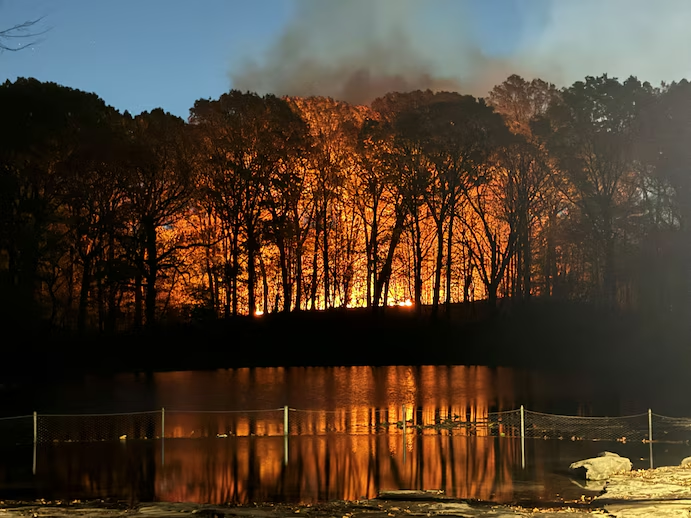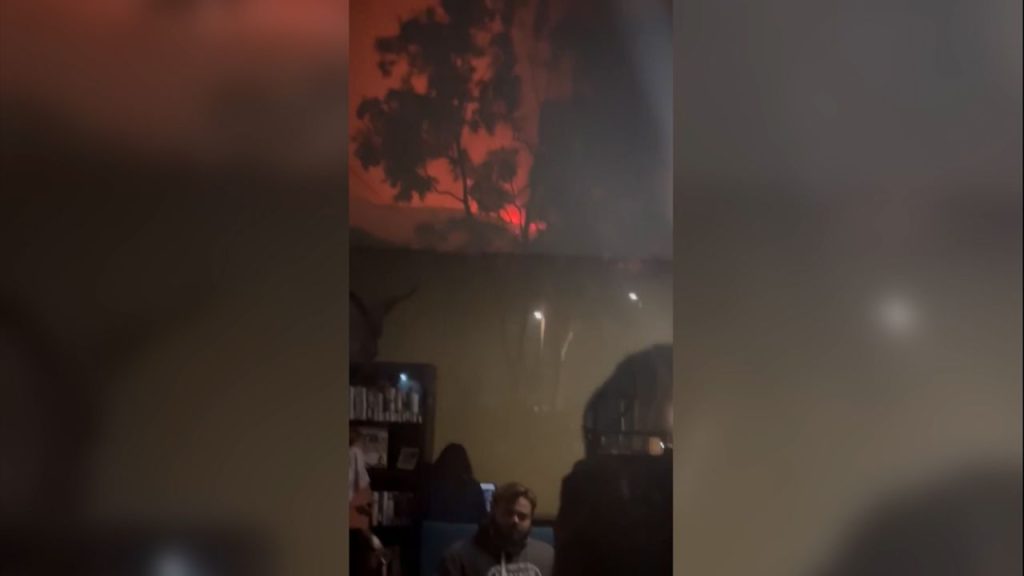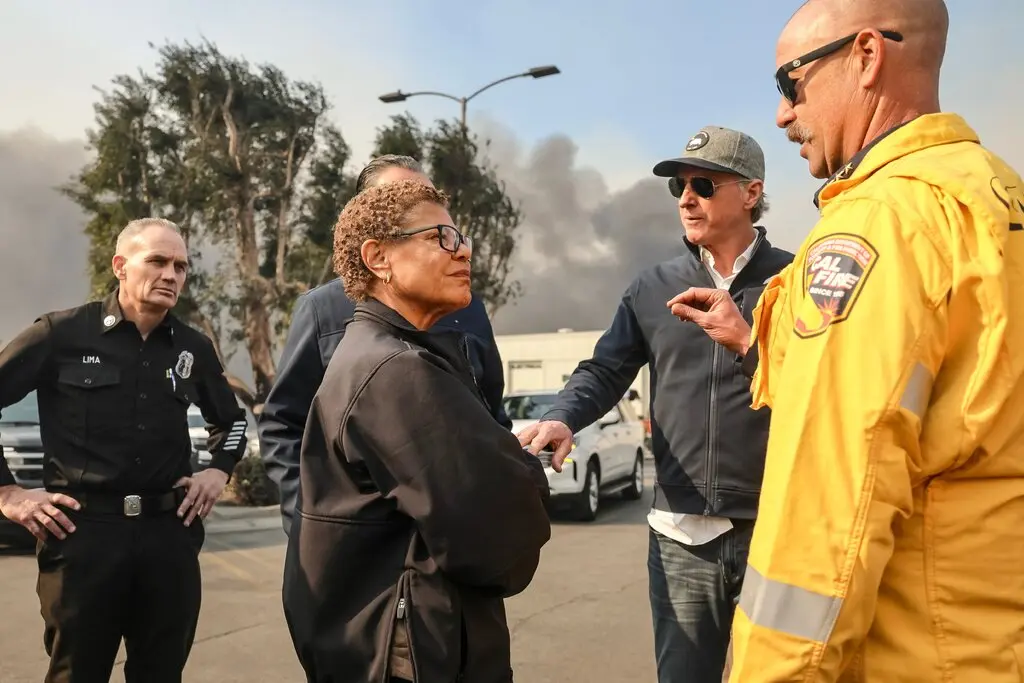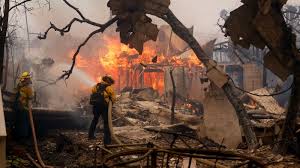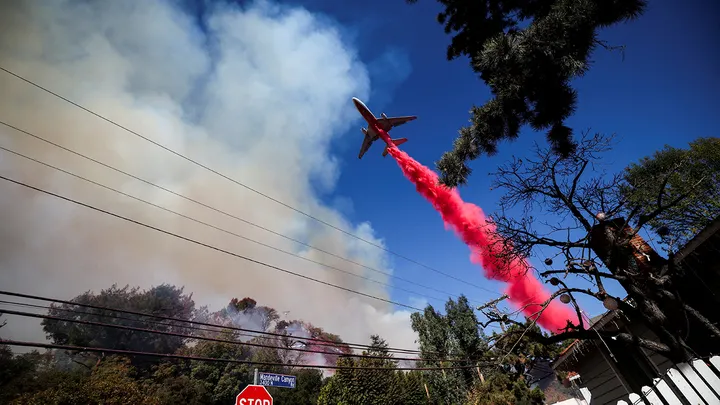LA braces for dangerously high winds which could bring ‘explosive fire growth’
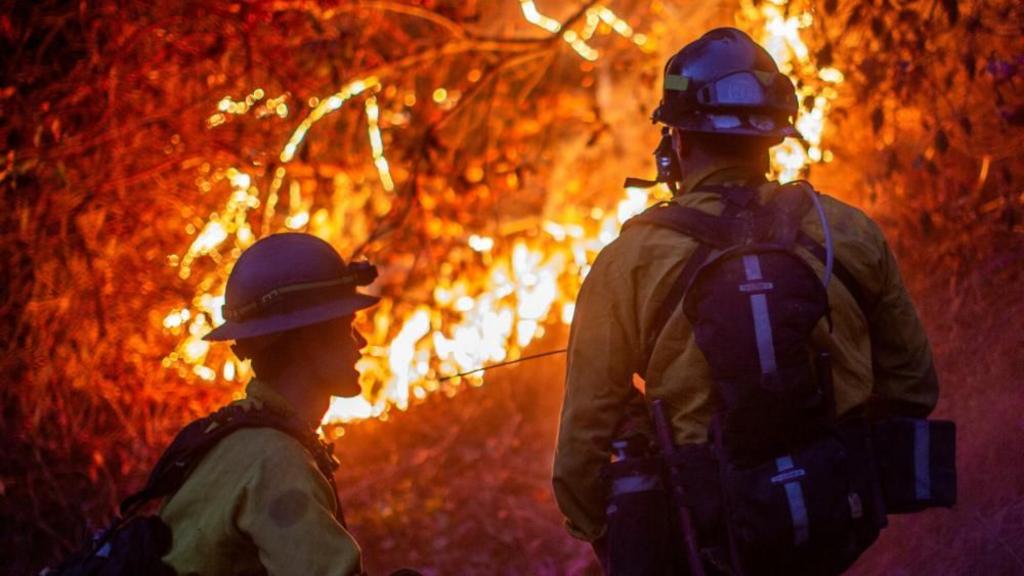
Los Angeles is on high alert as dangerously high winds are expected to hit the area, raising concerns about the potential for explosive fire growth. Weather experts predict gusts that could reach up to 70 miles per hour, and local authorities are preparing for the worst. These winds could exacerbate existing fire risks, making containment efforts even more challenging.
The National Weather Service (NWS) has issued a red flag warning for the region, signaling that the conditions are ripe for rapid wildfires to spread uncontrollably. High winds, coupled with dry vegetation and low humidity, create a volatile environment for wildfires to ignite and spread, particularly in areas already experiencing drought-like conditions.
Windstorm Threatens Firefighters’ Efforts
The high winds expected to sweep through the region will not only make it difficult for firefighters to contain any blazes but also pose direct threats to public safety. Firefighters rely on controlled conditions to manage blazes, and unpredictable gusts can cause fires to jump containment lines, forcing evacuations and putting lives in danger.
Southern California has faced a series of dry seasons, which have left much of the region’s vegetation parched. This makes it easier for fires to ignite and spread rapidly, especially when fueled by gusty winds. These winds, expected to hit Monday through Wednesday, will blow through mountain passes, valleys, and coastal areas, targeting the areas most prone to wildfires.
Officials have emphasized that the winds could cause “explosive fire growth,” meaning that once a fire starts, it could intensify quickly and become difficult to control. The unpredictability of such conditions has led to increased vigilance among fire departments across Los Angeles County and beyond.
Preparation and Precautionary Measures
In response to this heightened fire risk, local authorities are urging residents in vulnerable areas to take precautionary measures, including ensuring that their properties are fire-safe. Officials recommend clearing dry vegetation, trimming trees, and securing any loose objects that strong winds could blow around. People living in fire-prone zones have also been advised to prepare emergency kits and know evacuation routes in case a fire breaks out near their homes.
Evacuation plans are also being updated, with fire departments working closely with local governments to ensure that they can respond swiftly should the need arise. Community centers and shelters are being readied for displaced residents, and residents are being urged to stay informed by monitoring local news and weather reports. Many schools in high-risk areas have already canceled after-school activities as a precaution.
The Los Angeles Fire Department has deployed additional resources, including air support and specialized ground teams, to bolster firefighting efforts. In recent years, the department has faced criticism for being under-resourced during peak wildfire seasons, but this year, officials are hopeful that their increased preparedness will make a difference.
The Bigger Picture: Climate Change and Fire Risk
Experts argue that the increasing frequency and severity of wildfires in California is tied to the broader effects of climate change. Rising global temperatures have contributed to prolonged droughts, hotter summers, and an overall increase in fire seasons. The “Santa Ana” winds, which are known for their dry, hot, and gusty nature, have become more intense in recent years, further increasing the danger of wildfires.
Environmentalists and climate scientists are calling for more sustainable land management practices, better forest maintenance, and comprehensive measures to reduce greenhouse gas emissions. However, in the short term, the priority is managing the immediate fire threat posed by this week’s extreme winds.
Looking Ahead: A Long Road to Recovery
While authorities hope the winds will subside by the end of the week, the risks are far from over. Even if wildfires are successfully contained, the damage to property and ecosystems can be significant, and recovery can take months, if not years. Additionally, air quality in the region is expected to decline, leading to health risks for those with respiratory conditions.
For now, Los Angeles residents are urged to stay vigilant, adhere to evacuation orders if necessary, and follow all safety instructions. With the ongoing threat of high winds, fire growth, and unpredictable weather patterns, the city is bracing for what could be another devastating wildfire season.
As the situation continues to unfold, all eyes remain on the region, with authorities, residents, and fire crews working together to minimize the impact of this dangerous weather event. The severity of the upcoming winds serves as a stark reminder of the challenges posed by California’s increasingly volatile climate, and the need for continued preparation and resilience in the face of such natural disasters.


